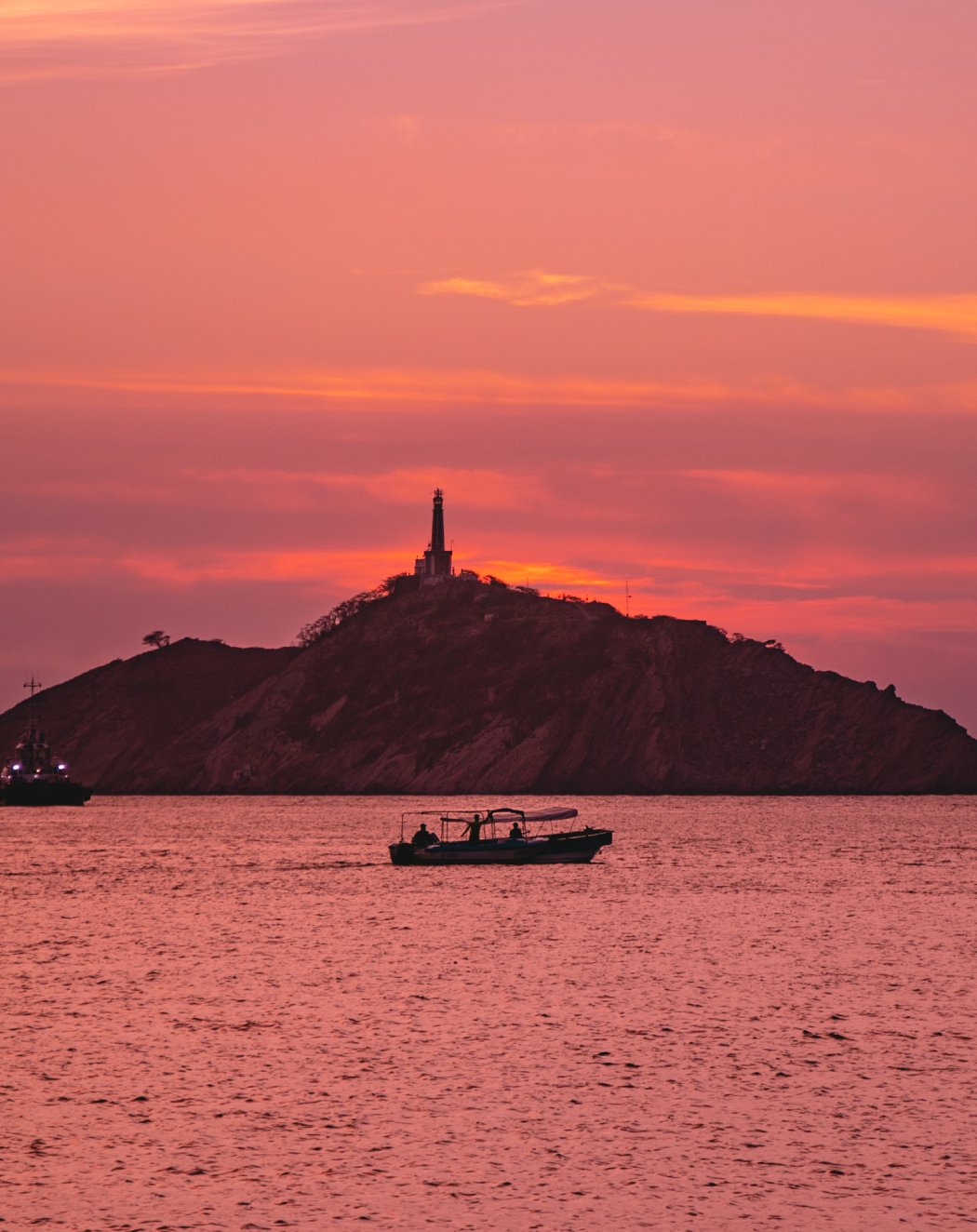

Santa Marta: The Pearl of the Americas
More than just a city, Santa Marta is a rosary of bays and inlets trapped between the foothills of the Sierra Nevada de Santa Marta —the highest coastal mountain range in the world— and the Caribbean Sea. The city, protected by the forest above, looks down on dry hills dotted with cacti.
By: Margarita de los Ríos
Photos: Andrés Mayr
Who could ask for a better year-round average temperature than 28°C/82°F? Or a sea with a more bewitching blue than the Caribbean? And what could be better than mountain roads that wind through dense tropical forests with an incredible abundance of bird species? Or golden sand beaches, coral-filled waters, and an endless chain of coves, separated by crystal-clear rivers rushing down from the mountains?

And that is just a taste of all that Santa Marta –the Pearl of the Americas and a new Copa Airlines destination– has to offer.
Day 1.
The City
Downtown Santa Marta’s recent renovation included restoration of Parque San Miguel and Parque de Los Novios as well as the iconic Catedral and San Francisco squares. Several major streets are now restricted to pedestrian traffic only and a new oceanfront boardwalk in place. The star of our walk through the historic city center was the breeze. Although “La Loca” —or “The Madwoman,” as the locals refer to Santa Marta’s seasonal ocean breeze— will blow the hat off your head, it also cools the air to a comfortable tropical temperature. Santa Marta, despite its status as Colombia’s oldest city, has a fresh glow about it, thanks to the restoration undertaken over the last decade.
Tree-lined parks have been equipped with urban outdoor furniture and the old streets, many now restricted to pedestrian traffic, are lined by colorful houses with wooden balconies, perfect for people-watching. Bars and restaurants place tables outdoors under shady trees, lending an international air to the city.
Our visit begins in the recently paved Plaza Catedral. The city’s founder, Rodrigo de Bastidas, is buried here, as was Bolívar the Liberator before his remains were sent to Caracas. From here we venture on to Parque de Los Novios, where we hear about restaurants helmed by well-known chefs, boutique hotels in old colonial mansions, and bright nights filled with live music. Next, we visit Parque Bolívar, built in honor of the Liberator, who shortly before his death spent six days in what was then the Customs House and today is the Tayrona Museum. Inside the museum we are amazed by the gold and ceramics found in the Sierra Nevada.
We finish up at the Bastidas Boardwalk, an expansive half-mile oceanfront sidewalk with bike paths, trees, and recreation areas. It runs parallel to the bay that is famous for the best sunsets in Colombia. Our day ends at the international marina, which adds a cosmopolitan flair to the city.


Two additional attractions: Quinta de San Pedro Alejandrino
The 17th-century hacienda where Simón Bolívar spent his last days. Pathways under leafy trees connect the Altar de la Patria, the Museum of Contemporary Art, the Botanical Garden, and the hacienda’s colonial buildings.


Mamancana
An unbeatable combination of beach and mountain offering activities such as mountaineering, a climbing wall, zip lines, rappelling, archaeological walks, and animal observation.
What About Hotels?
Restoration of the historic city center was followed by the arrival of signature restaurants and international hotel chains.


- Hilton Garden Inn
recently opened its doors, joining the list of boutique hotels.
- Hotel Boutique Don Pepe
- Hotel Placita vieja
- Marriott Playa Dormida
is a new arrival in Bello Horizonte, where the city’s best beaches are located. It features decor inspired by the tropical landscape of the Sierra Nevada range and the area’s indigenous traditions. The hotel has two restaurants and 168 rooms.
- Irotama
- Zuana Beach
- Hotel Emile Mercure
+57 5 4368484
- Dreamer
Dreamer represents a new generation of hostels for young people with a focus on design, good food, and authentic local experiences. The chain was born in Santa Marta and has already expanded to Palomino, San Andrés, and Bogotá.
Day 2
The Tayrona Nation
The Sierra Nevada de Santa Marta range is the geographic and spiritual territory of the descendants of the Tayrona people, now the Arhuaco, Wiwa, Kogui, and Kankuamo ethnic groups, each with its own language and customs. The snow-capped Sierra Nevada de Santa Marta mountains rise up 19,000 feet from the shores of the Caribbean. The Tayrona people, who have inhabited the Sierra since pre-Columbian times, built hundreds of villages connected by stone pathways that crossed the width and breadth of the territory. Their dwellings, ceremonial sites, and crops were laid out on terraces to prevent erosion.
With the arrival of the Spaniards, the indigenous people fled to the highlands and the jungle covered all signs of their ancient civilization. It wasn’t until 1973 that the most famous of these cities, Teyuna, was discovered. The “Lost City,” as Teyuna is known, can be reached by a three-day trek up the famous Tayrona trails, with a final 900-step ascent. The descent takes two days.
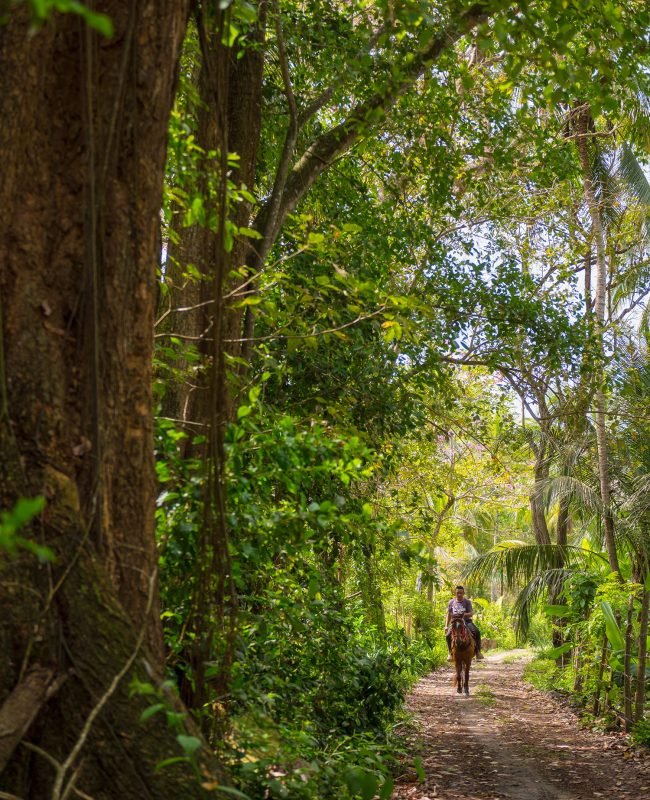



Tourists unprepared for this adventure have an alternative: a visit to Taironaka, another of the more than 200 cities thought to exist in the Sierra range. The famed Captain Francisco Ospina Navia discovered the site twenty years ago and an easy path now leads up to Taironaka from the highway. The park and eco-lodge boast a museum displaying valuable artifacts discovered on site, a hotel, and a restaurant. Taironaka is perched above the Don Diego River, where locals offer “tubing” rides down the river to the sea.
Bunkuany, another recently discovered city, can be visited by following the road leading up the mountain from Calabazo. At the end of this road is the Hotel Madre Sierra, with wooden cabins that blend into the surrounding mountainside. Guides will lead you from the hotel on a two-hour walk. The terraces have been restored by the owners of the hotel.
Day 3
Parque Tayrona
Tayrona, with its chain of golden beaches, choppy waves, and shady stone paths below the forest canopy, is the jewel in the crown of any trip to Santa Marta. Local Kogui guide José Niño moves adeptly along the park’s trails, as if he were in his own backyard. In his company, the four-hour (round trip) hike from Cañaveral to Cabo San Juan becomes a lively class in local botany.
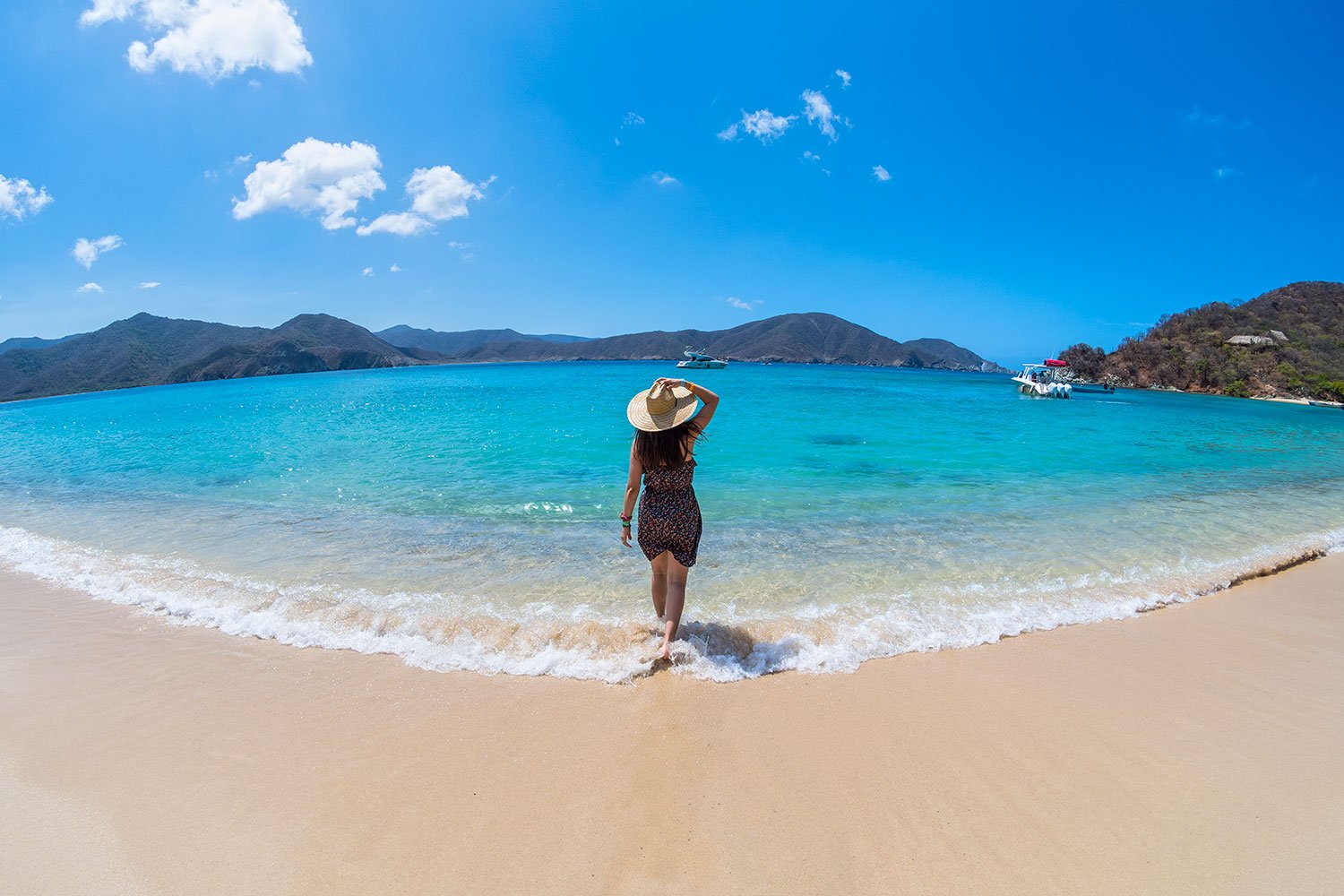

Tayrona National Park, which was officially named in 1964, has more than 16 coral beaches, some with turquoise waters, some placid, and others very dangerous for swimming. Our hike took us past Cañaveral, Arrecife, Arenilla, Piscinita, and Guachaquita to the cape and a kiosk atop a rock offering an incredible cinematic view. Shortly after enjoying ourselves on the beach and savoring a lunch of fried fish and patacones, we checked Playa Desnuda off our list as well.
Along our hike, José explained that the park is divided into four sections: Bahía Concha, closest to the city; Neguanje, which is accessed by the Manzanares River; Pueblito, the park’s own archaeological zone, now closed by order of the indigenous communities; and Cañaveral, the most popular, with its picturesque ecohabs, accessed by El Zaino.
The park covers 46 square miles of land and twelve square miles of ocean and has four types of forests. There are 400 species of birds in the park, including one hundred remarkable species that attract birders from around the world.
Another Way to Visit the Park
You can also drive to Neguanje and take a five minute boat ride to Playa Cristal, listed as one of the “25 Best South American Beaches” by Trip Advisor’s Travelers Choice Beaches in 2018. To get there, take a detour through Manzanares.
Take Note
The indigenous people of the Sierra Nevada close the park three times a year to give the site a chance to recover. This year the park will close February 1-15, June 1-15, and October 19-November 2.
It’s also a good idea to avoid visiting the park in high season (December 15-January 15 and during Holy Week) as long queues can form beginning in the late morning.
Where to sleep?
Most of the lodgings in the park are temporarily closed but there are plenty of beautiful hotels in the surrounding towns.
- Vic Hotel Cayena Beach
Troncal del Caribe Km 39
- Villa Playa Tayrona
Troncal del Caribe Km 30
- Hotel Senderos del Mar
Troncal del Caribe, Km 44
@senderos_del_mar
Futher informationwww.parquetayrona.com/hoteles
Day 4
Go up to Minca
The road winds up the mountain, moving slowly inside the Sierra Nevada de Santa Marta range. Gone are the cacti and brush as, little by little, the ruffled greenery of the forest takes over. Soon the temperature drops ten degrees, one degree for every three feet we rise above sea level. This is the tropics.
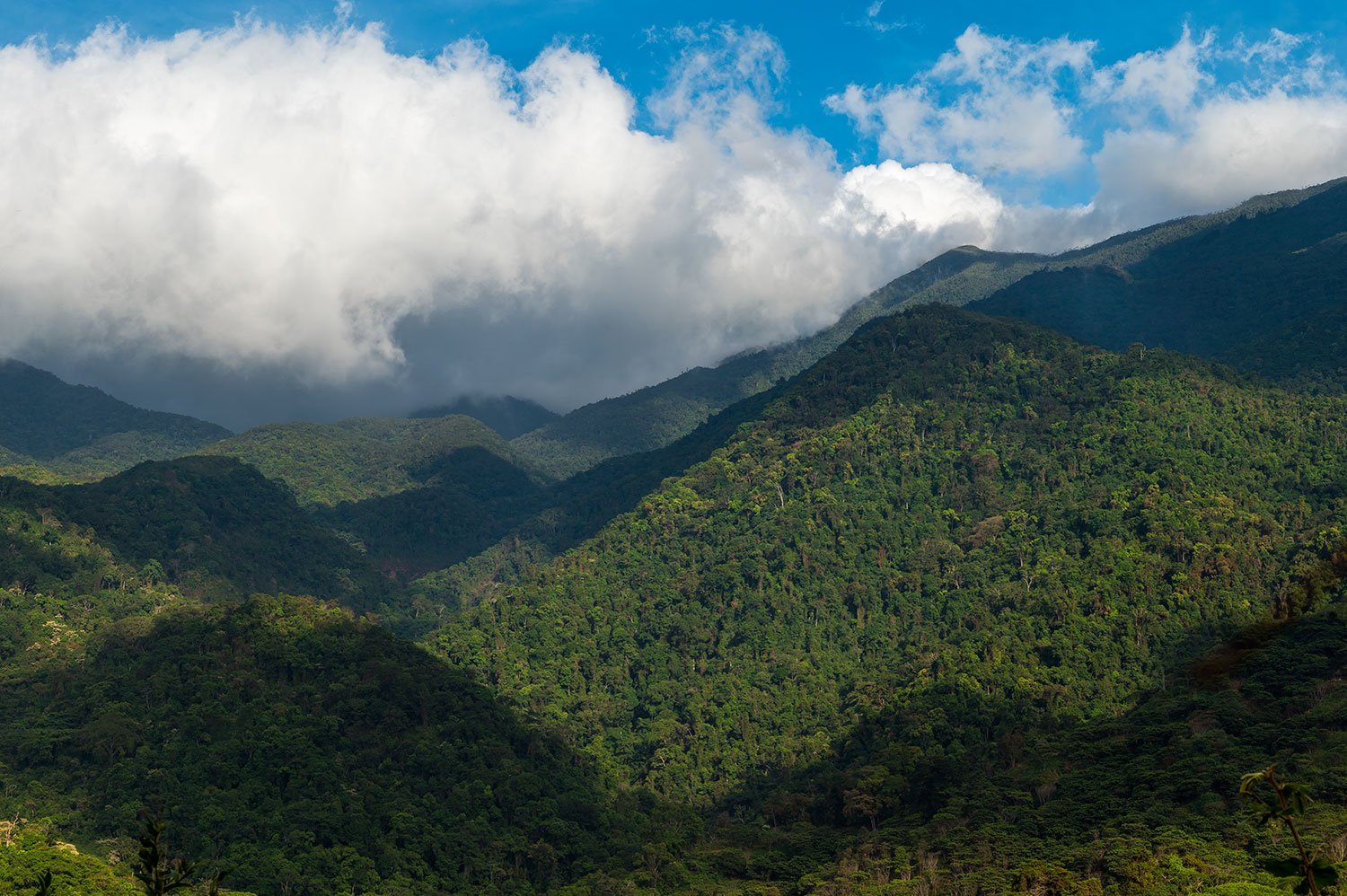

In Minca you’ll feel the “spirit of the Sierra,” which makes it the perfect place for relaxing at a spa, enjoying the views of the rivers and abundant waterfalls, or simply being spellbound by the different levels of the Sierra mountains. This is exactly what happened to Antonio Pitar, who came to these heights twelve years ago. He started out planting coffee and then one day, while he and his wife were in what was to become his private study, dusk fell and the sky filled with color. He felt he should share the sense of beauty that overtook him and that is how the Hotel Colores de la Sierra was born.


We met nature guide and bird watcher Cristian Sierra Villalba along one of the hotel’s trails and he told us about the 175 varieties of birds and 27 endemic species that inhabit the hotel’s twenty acres. Birders come from all over the world to look for them.
Other Attractions
Hacienda La Victoria.
Founded in 1892 by Englishmen who came to build the Santa Marta railway. You can tour the ancient machinery and enjoy coffee and craft beer tastings.
Tel. 57 317 308 5270 www.la-victoria.coffee.com
Where to stay
- Colores de la sierra
for those who enjoy contact with nature.
- Sweet Harmony
is the ideal place to rest in comfort.
- Casa Elemento
is famous among Instagrammers for its giant hammocks.
@casaelemento


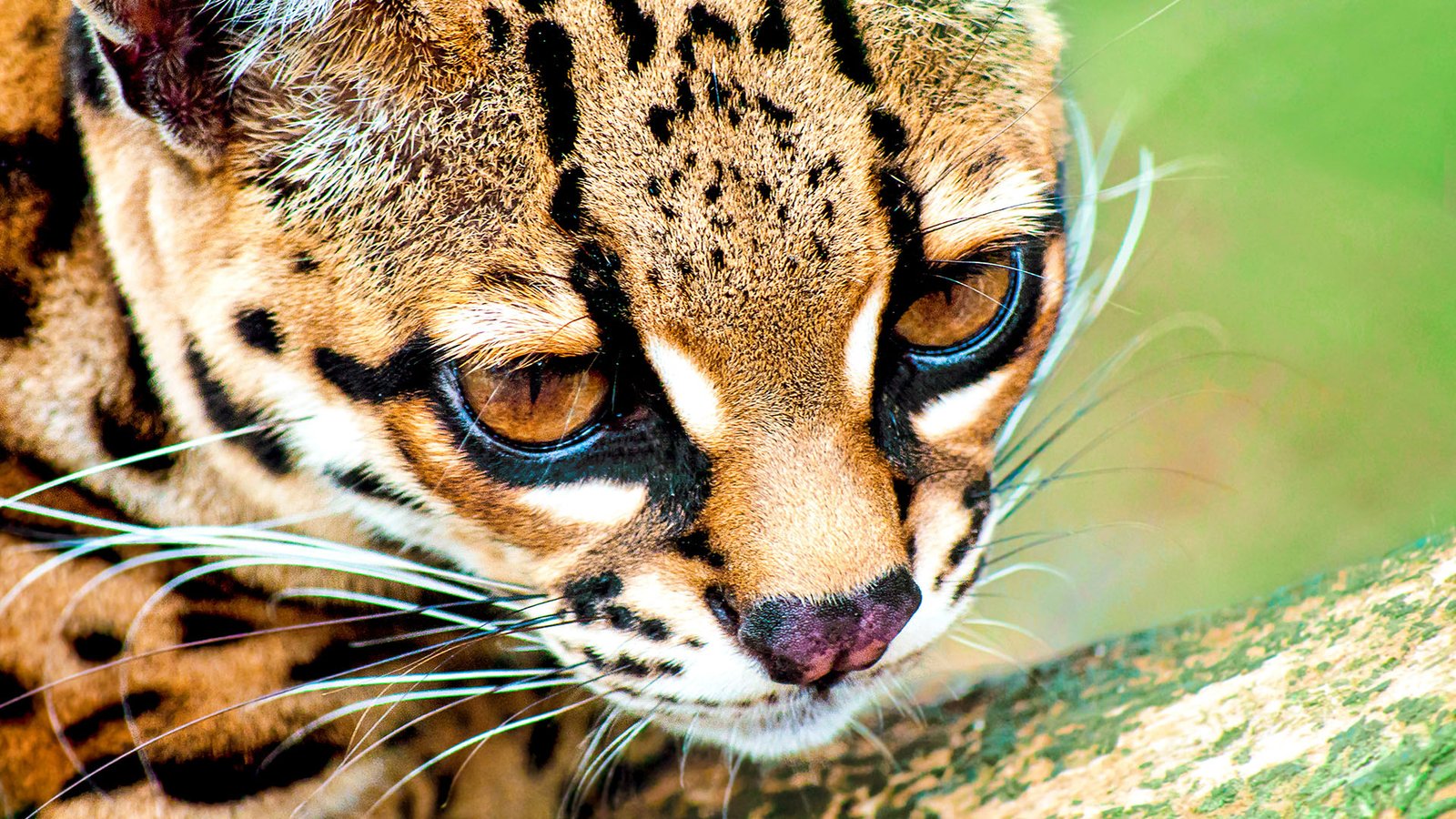
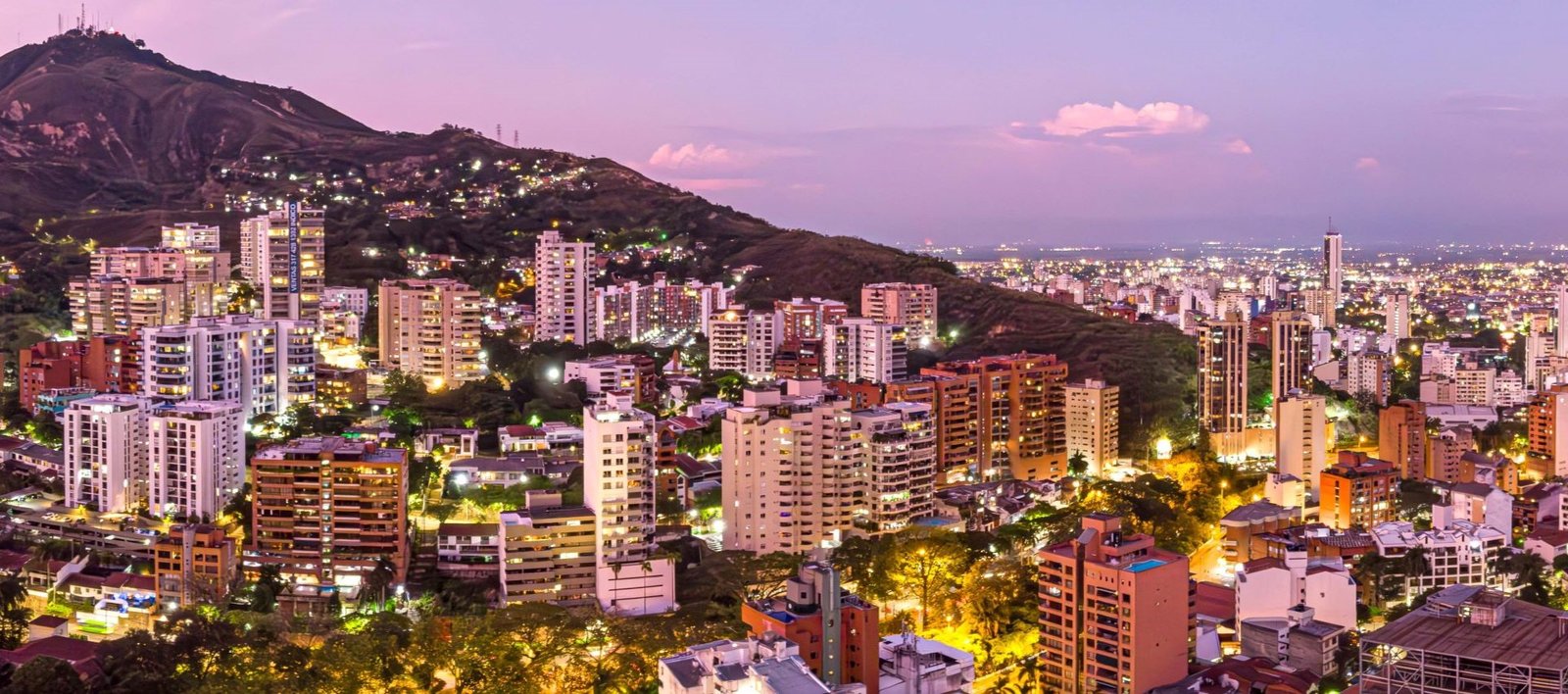
Leave a Reply